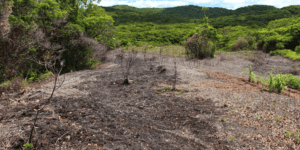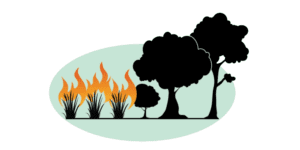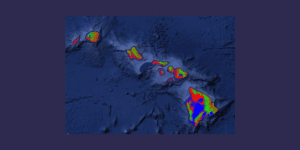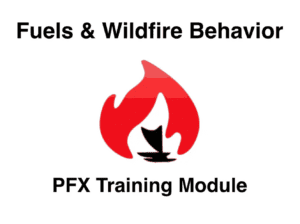Author Clay Trauernicht provides a spatial fire occurrence models to reveal the relative influence of multiple drivers, and discusses rainfall-vegetation interactions as a key predictor of fire risk variability as well as future drying predictions with climate change.
This 2-page fact sheet explains the problem of wildfire on tropical islands as it intersects with watershed and marine resource health, invasive species, climate and weather. Tags: Hawaii, Climate & Fire, Fire…
Understanding the Grass-Fire Cycle can help to better manage grasslands and savannas, reduce the risk of wildland fire, and limit the impacts of re on our communities, watersheds, and native ecosystems. Tags:…
Wildfires on Guam burn an average 3.3% of the island’s area each year. That’s a lot, when you consider Guam is only 210 square miles. Fire has immediate impacts on the communities,…
Matt Lucas presents on land cover Geographic Information Systems products for Hawai‘i and other Pacific Islands. He is a Master of Science graduate of the Natural Resource and Environmental Management Dept at…
Derek Wroe, Lead Forecaster for the National Weather Service Honolulu Office, presents on the climate- and weather-driven factors of wildfire in Hawaii (54 MINS) WATCH THE WEBINAR
Tamara Ticktin (Professor of Botany, University of Hawai‘i), Amy Tsuneyoshi (Watershed Resources Specialist, Honolulu Board of Water Supply), and Clay Trauernicht (Wildfire and Ecosystems, University of Hawai‘i) present on post-fire restoration efforts…
This PFX Training Module is a self-paced mini-course that will help you understand how fuel type, characteristics, arrangement, and environment affects fire risk and fire behavior. You will also learn to identify hazardous fuels types and arrangements on a landscape.
This PFX Training Module is a self-paced mini-course that will help you understand how fuel type, characteristics, arrangement, and environment affects fire risk and fire behavior. You will also learn to identify hazardous fuels types and arrangements on a landscape.
Fire shaped the history of forest management in Hawaii in much the same way it did in the continental US.
- « Previous
- 1
- 2
- 3
- Next »






